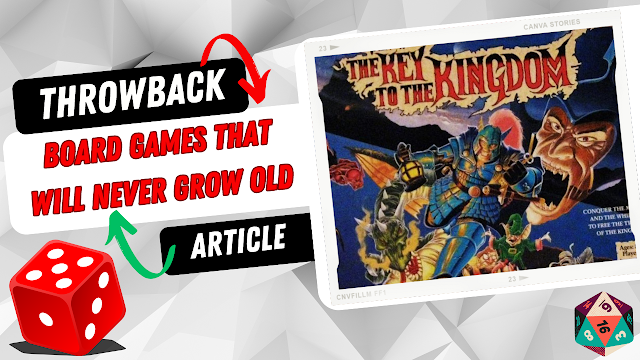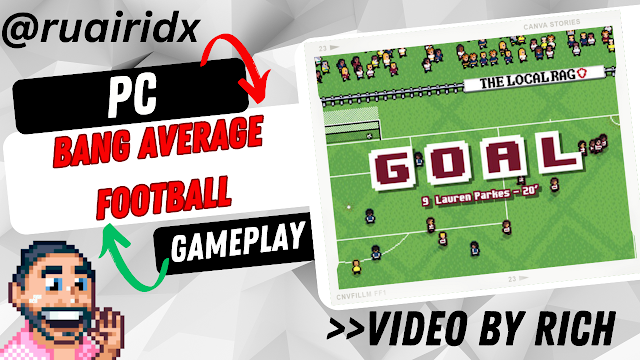Tanzia is a pedigreed role-playing video game from some of the minds behind Wasteland 2 and Knights of the Old Republic II. Some might say they’re pretty good at sequels. Perhaps they need to be, as we will soon discover.
Before we begin, please note that this game is in beta. The developers say that it’s practically done, but even so, everything should be taken with a pinch of salt.
To enter into the world of Tanzia seems an enticing option at first; the game opens with a cutscene populated by wonderful paintings that are bursting with life and fantastical beauty. They’ve clearly been made by someone with talent. However, this is a game review, not design school. And from a gaming perspective, it takes too damn long for the elderly narrator to spin us a tale of what amounts to ‘bad guy does bad thing’. We’ve got our big bad, the Skeleton King; we’ve got our Obi-Wan; we’ve got our Chosen One.
A lot happens in this first cutscene, and I feel it could have been a little more succinct. Maybe part of it could’ve been gameplay – that would have been a nice touch. Oh, and get used to hearing the words ‘Skeleton King’: he gets mentioned a lot.
It can be grating, to put it briefly.
"As he thrust his spear into the fragile ribcage of the skeleton, his eye twitched involuntarily as he realised he’d forgot to put the bins out."
It’s not a bad thing to open your game with narration. One of the greatest games of all time, Oddworld: Abe’s Oddysee, has narrated cutscenes. The difference is that every line of Abe’s exposition rhymes, a limitation that helps to keep the plot concise and entertaining.
At least Tanzia’s opening doesn’t skimp in the art department.
The painterly polish seen in the intro spreads to the rest of the game. Upon waking up in the village, you’re greeted with the same lively colours and enchanted accoutrements that adorned the cutscene, this time occupied by a host of NPCs. Reaching this point, you know straight away how this game is going to play out – the camera angle, the layout of the UI and the…ahem…lack of any life in many of the NPCs suggests, correctly, that this game feels like an MMO. The village has everything a growing adventurer needs: a wise quest-giver, a potion shop (which doubles as a crafting station), and a load of cannon fodder enemies, used to acquire loot and a small amount of XP.
I hate to say it, but it’s just like every other starting town in every other MMO I’ve played.
I suppose it’s a tried-and-tested formula, but is that going to impress the crowds? Break the rules, guys! Have the NPCs wander around a bit, maybe even enter and leave the area now and again. Make it feel like a living, breathing world. It might sound an odd comparison but look at Tony Hawk’s Pro Skater 3. The Canada level is a great example – skaters in the park will tell you how much you suck (eh), there’s a group of people throwing snowballs around, and there’s a guy doing his business off the edge of a ramp. Tanzia could have its NPCs call you over when they have a quest; they could be training at the dummies or practising magic on the chicken creatures, or they could be running around doing errands and things. They don’t have to necessarily be interactive as such, but it’d go a long way to prevent the game feeling static. Might as well make use of that world, after all.
"The Great Yarmouth over-seventies tour group had discovered that tonight was bingo night."
That’s not to say that Tanzia is completely devoid of life, however. Its self-professed ‘comic book’ style spills out into every crevice, bringing an environment of lush greenery, clear blue skies and an exuberant, colourful atmosphere. On the other hand, the graphical fidelity of the game is nothing to write home about. Its art style grants it certain concessions in that department, but you can’t help but notice a tree with an edge so jagged that it’s become a health and safety risk. Some of the NPCs are a little dated, too – I met some tortoise creatures that looked as if they’d just left a PlayStation 2 game.
These may be considered bad points, depending on how you look at it, but it’s worth noting that Tanzia is designed to be an old-school MMORPG experience, so PS2-era graphics kind of fit the theme. I personally think the art style carries it. Your mileage may vary.
Despite having good looks and an almost charming personality, Tanzia’s gameplay may stop you in your tracks, as it did for me. The UI can be clunky, lacking hotkeys for menus such as inventory, skills and the spellbook, but it’s at least functional. There is also no way to drop items, and certain items (such as chewed sandals) can’t be sold to vendors, meaning you have this utterly useless item sat in your inventory taking up room.
But by far the worst problem this game has – and may be due to its lineage as an old-school MMORPG – is that the AI is dumb as a rock. The few monsters that I encountered had one single directive – to chase, and to never stop chasing. And when you inevitably run out of mana, the last thing you want is an entourage of enemies hot on your heels. It becomes impossible to fight after a certain point, and running away isn’t even an option. Not even the guards around the villages are willing to lend a hand. You’ll need to stock up on all the potions money can buy before facing down a large group, and even then, the meagre amount of cash received from low-level enemies doesn’t go too far when buying such goods.
Especially when, upon dying, the game has no idea what the rules are.
I died a few times. It was bound to happen, right? And it was a simple matter of being plonked back where I was and starting again. But Tanzia is unsure which rules it wants to follow when it drags you from the brink. On my first death, I lost all my mana potions and a unique teleportation feather that I’d found on a side-quest, but I didn’t get my money back, nor could I replace my feather. On my second death, I had to quit because the game took away an irreplaceable potion that I needed to progress on the main questline – while leaving all the chewed sandals I’d picked up. Very useful.
Perhaps this will be patched, but exercise caution just in case.
One final point: a great RPG lives or dies based on its narrative. Look at Fallout, Planescape: Torment, or Deus Ex - they are praised based on their writing and their totally immersive worlds. Tanzia's world feels like it revolves absolutely around the player character, which isn't how an RPG should be: it should be its own world with a host of things happening at any one time, and the player just happens to be party to these proceedings. The protagonist of Deus Ex, J.C. Denton, is a major player in the events he’s involved in, but the game isn't really about him; it's about the struggle of power, conspiracies, and the falsehoods of modern-day leadership. Then again, Tanzia’s focus may shift later on in the game – it’s hard to say after playing only a couple of hours.
"The redesign of Dewsbury train station had been met with mixed reception."
Summary:
So, is this game for you? If you yearn for the old days of MMORPGs, but without the MMO bit, this is your game.
It’s not perfect – nothing is – and it could do with a while longer in the oven, but I think there’s some enjoyment to be had here. If you saw the words ‘action RPG’ and (like me) expected something like Baldur’s Gate, then perhaps not.
So, is this game for you? If you yearn for the old days of MMORPGs, but without the MMO bit, this is your game.
It’s not perfect – nothing is – and it could do with a while longer in the oven, but I think there’s some enjoyment to be had here. If you saw the words ‘action RPG’ and (like me) expected something like Baldur’s Gate, then perhaps not.
RATING: MELTING
Ratings Explained
ICE COOL (Great Game Recommended)
MELTING (Just Falls Short Of Greatness)
MELTED (Not A Recommended Purchase)







No comments:
Post a Comment
Like what you see in the Games Freezer?
Why not tell us what you think with a few well-chosen comments? :)
Note: only a member of this blog may post a comment.